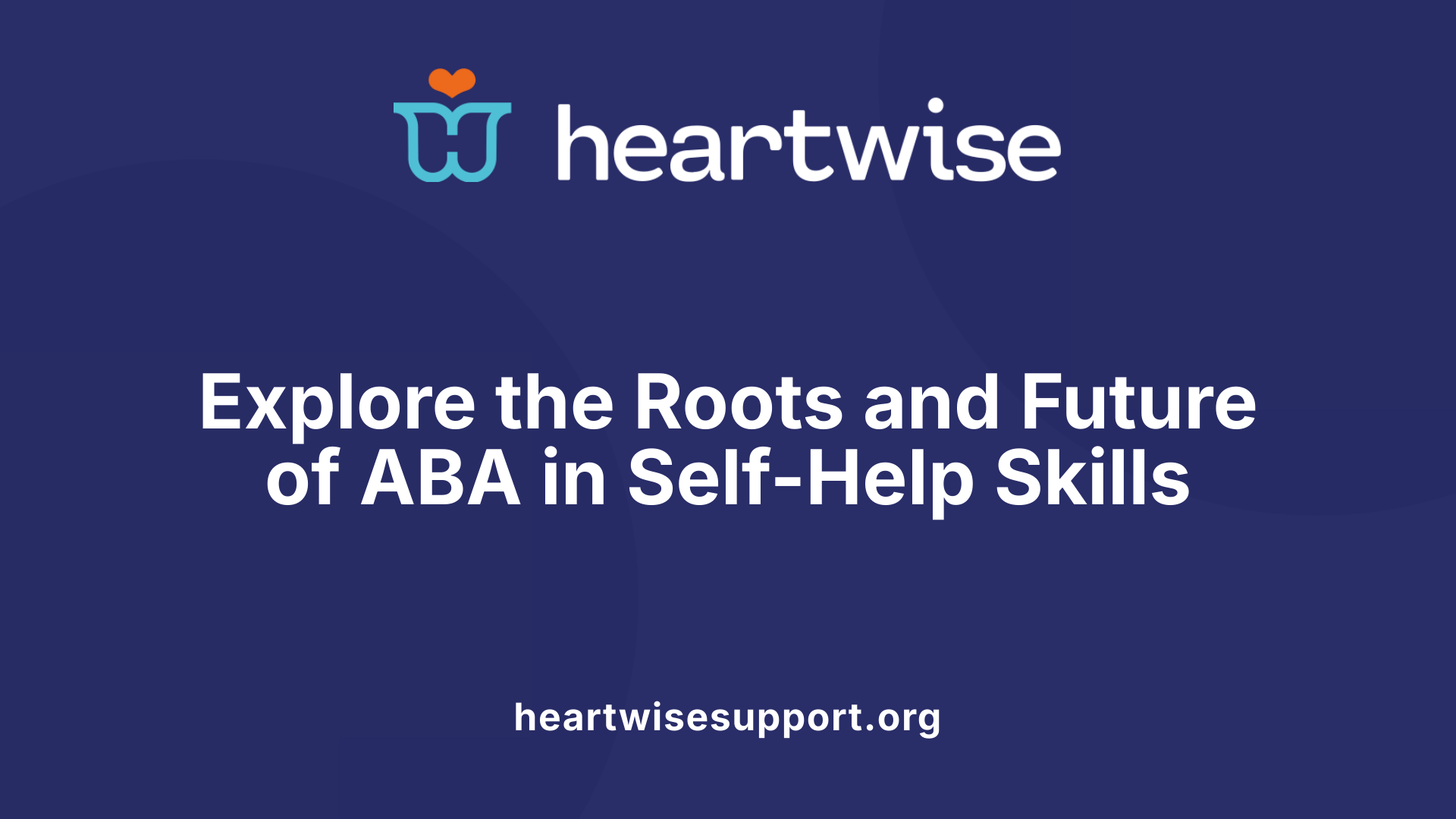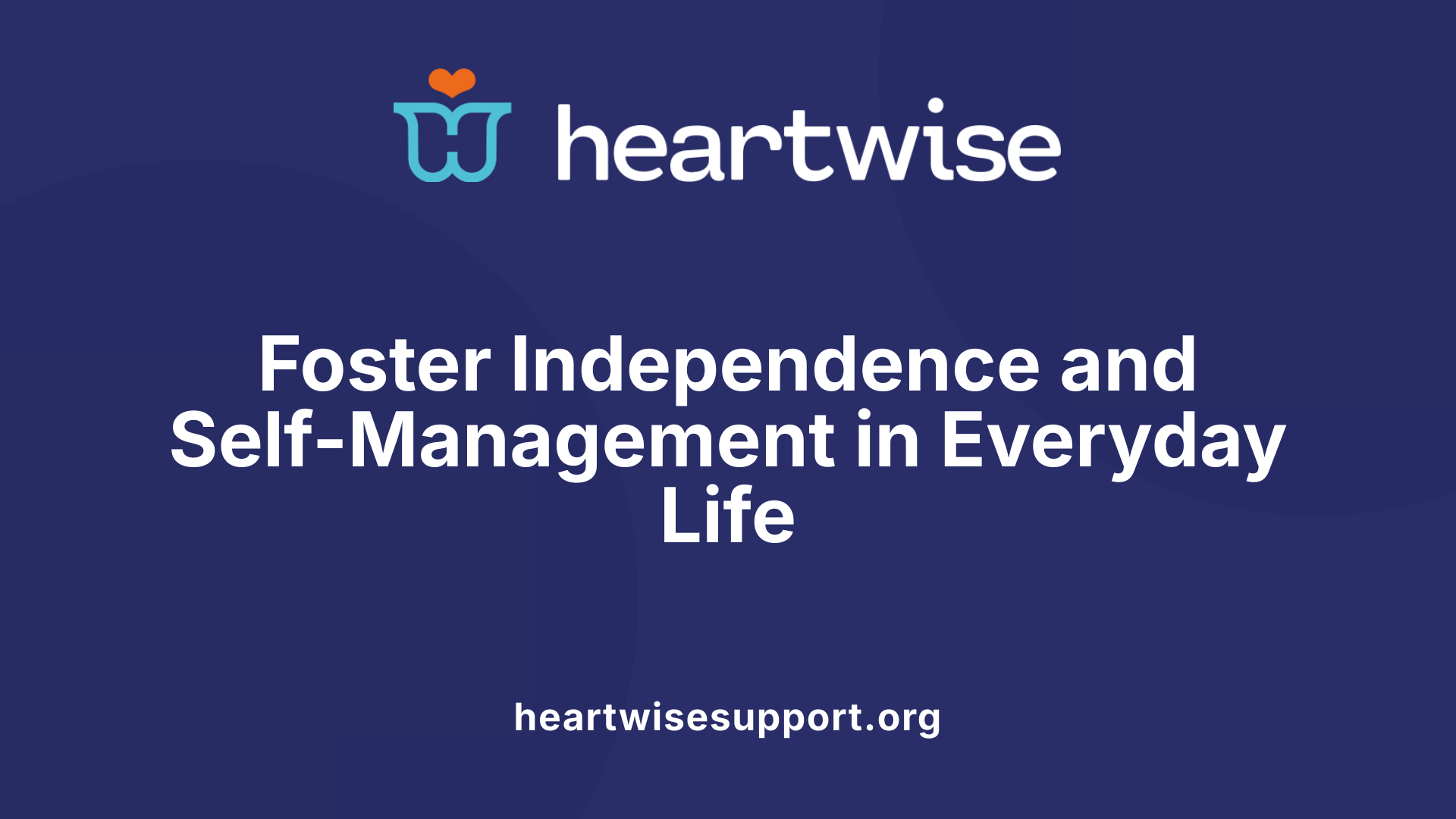Understanding the Role of ABA in Self-Help Development
Applied Behavior Analysis (ABA) is a scientifically supported approach that has transformed the way children with autism develop essential self-help and self-management skills. Rooted in principles of learning and behavior, ABA employs structured techniques to teach, reinforce, and generalize daily living skills, fostering independence and improving quality of life. This article explores the core methods, benefits, and practical applications of ABA in enhancing self-care abilities for children and individuals with neurodivergent conditions.
Foundations and Evolution of ABA in Self-Help Skills Development

What are the benefits of using ABA therapy to enhance self-help and self-management skills?
ABA therapy provides numerous advantages in cultivating self-help and self-management abilities. It teaches individuals how to perform essential daily routines such as dressing, brushing teeth, toileting, and preparing meals independently. Using methods backed by scientific research, like positive reinforcement and tailored strategies, ABA significantly supports each child's unique needs.
Focusing on improving communication, social interaction, and behavior regulation, ABA helps children understand and manage their actions and emotions better. Early intervention, starting as young as age 2, makes a marked difference in long-term independence and everyday functioning.
This therapeutic approach fosters greater self-reliance, safety, and overall quality of life. By systematically teaching these skills, ABA enables individuals to gain confidence and autonomy, which are vital for successful integration into daily life and social settings.
What research evidence supports the effectiveness of ABA in improving self-help abilities?
A substantial body of research confirms that ABA is highly effective in enhancing self-help skills, especially among children with autism spectrum disorder (ASD). Studies and systematic reviews show that intensive ABA programs, often involving 25-40 hours weekly over several years, lead to significant improvements in daily living skills.
Research highlights include the use of task analysis, prompting, shaping, and modeling—all proven techniques within ABA—to teach routines like hygiene, feeding, and dressing. The American Psychological Association and the US Surgeon General endorse ABA as an evidence-based approach that reliably increases independence and decreases problematic behaviors.
Organizations and academic publications consistently reaffirm that structured ABA interventions produce meaningful, measurable gains in self-care and daily functioning, supporting its role as a foundational treatment for individuals with ASD.
What are ABA techniques used to develop self-help skills?
Key ABA techniques used in teaching self-help skills include:
- Task analysis: Breaking down complex activities like dressing or brushing teeth into smaller, manageable steps.
- Prompting: Offering assistance via verbal cues, visual aids, or physical guidance to initiate each step.
- Fading prompts: Gradually reducing assistance to foster independence.
- Positive reinforcement: Rewarding successful completion with praise, tokens, or preferred activities.
- Visual supports: Utilizing picture schedules, checklists, and visual cues to enhance understanding and independence.
By systematically applying these methods, therapists help children acquire critical skills essential for daily living, boosting confidence and promoting autonomy.
How can ABA be applied to improve independence and self-care in children with autism?
ABA’s personalized approach involves assessing each child's current skills and designing intervention plans that target specific self-care routines. This often begins with detailed task analysis and consistent instruction across different settings like home, school, and therapy clinics.
By incorporating positive reinforcement and prompt fading, children gradually master tasks such as dressing, grooming, and feeding themselves.
Training parents and caregivers is crucial. They learn to reinforce skills at home consistently, which aids in generalization. ABA also addresses behaviors that may interfere with self-care, teaching functional alternatives.
Overall, ABA fosters skill acquisition and reduces behaviors that hinder independence, empowering children to manage daily activities confidently.
Can you provide examples of ABA interventions for self-help skill development?
Example interventions include:
- Task analysis for dressing: Breaking down into putting on a shirt, fastening buttons, and matching socks, then teaching each step sequentially.
- Prompting and fading: Using visual cues to assist with brushing teeth, then gradually removing prompts as the child becomes more proficient.
- Reinforcement strategies: Providing praise when completing a step correctly or earning tokens toward preferred activities.
- Visual supports: Picture schedules illustrating routines such as morning or bedtime routines.
- Self-management techniques: Teaching children to monitor their own progress, set goals, and reward themselves upon task completion.
These interventions make self-help skills more manageable and achievable, promoting independence.
What are the components and steps involved in implementing ABA-based self-help interventions?
The implementation process involves several stages:
- Assessment: Determine the child's current skill level and identify target behaviors.
- Goal setting: Define clear, achievable objectives using SMART criteria.
- Task analysis: Break skills into smaller steps.
- Planning: Develop individualized intervention strategies incorporating prompting, reinforcement, and visual supports.
- Teaching: systematically instruct each step, provide prompts, and apply reinforcement.
- Data collection: Monitor progress through consistent recording of performance.
- Evaluation: Analyze data to refine strategies and ensure skill acquisition.
- Generalization: Practice skills across various settings and situations.
Ongoing collaboration among therapists, caregivers, and educators ensures effectiveness and consistency.
How can educators and caregivers effectively use ABA to promote self-help skill advancement?
To maximize ABA's benefits, educators and caregivers should:
- Develop individualized plans based on thorough assessments.
- Use task analysis to simplify complex routines.
- Implement prompts strategically, fading them gradually to encourage independence.
- Reinforce successes immediately with praise or rewards.
- Incorporate teaching into routine activities for natural learning opportunities.
- Maintain consistency across environments.
- Collect data to track progress and make data-driven decisions.
- Provide ongoing training and support to foster a coordinated approach.
This structured, consistent approach significantly enhances a child's ability to learn and sustain self-help skills, leading to greater independence and confidence.
Core Components and Techniques in ABA for Self-Help Skills

What are the components and steps involved in implementing ABA-based self-help interventions?
Implementing ABA-based self-help interventions requires a systematic, personalized approach that aligns with each child's specific needs. The process begins with conducting thorough assessments to understand the child's current abilities, challenges, and environmental factors. This helps identify areas where skill development is needed and sets the foundation for goal-setting.
Once assessment data is gathered, practitioners develop a set of SMART (Specific, Measurable, Achievable, Relevant, Time-bound) goals. These goals guide the selection of appropriate skills to teach and determine achievable milestones.
A core element of ABA intervention is breaking down complex skills into smaller, manageable steps—a technique known as task analysis. For example, teaching a child to brush teeth involves steps like applying toothpaste, brushing each tooth, rinsing, and drying.
Teaching these steps involves the strategic use of prompting, such as verbal cues, physical guidance, or visual supports. Prompts help the child succeed during initial learning but are gradually faded to promote independence.
Reinforcement plays a crucial role in ABA. Positive reinforcement, like praise or small rewards, encourages children to practice and master new skills. The use of reinforcement is tailored to the child's preferences to maximize motivation.
Teaching self-management skills is also vital. Components include self-instruction, self-monitoring, and self-evaluation. For example, a child might use a visual checklist to track their progress or receive tokens for completing steps independently.
Visual supports such as picture schedules, checklists, and timers facilitate understanding and organization. These aids help children manage their routines, expectations, and transitions more effectively.
Environmental modifications are made to support self-management. This can include arranging the physical space to reduce distractions or using visual timers for activities, promoting better time management.
Throughout the intervention, ongoing data collection is essential. Tracking how well a child performs each step helps identify what works and what needs adjustment. Regular review ensures the program remains responsive to changing needs.
Collaboration with families, caregivers, and professional team members like BCBAs (Board Certified Behavior Analysts) ensures consistency across settings. Regular communication and training reinforce strategies at home and in other environments.
In sum, effective ABA self-help interventions involve a combination of detailed assessment, strategic skill breakdown, prompting, reinforcement, visual supports, self-management techniques, and ongoing data analysis. This structured approach aims to foster independence, confidence, and functional skills that are essential for daily living.
Tools and Technologies Supporting Self-Help Skill Acquisition

What tools and technologies support the development of self-help skills?
Tools and technologies are essential in enhancing self-help skill development through ABA therapy. Visual aids like picture schedules, checklists, and icons help children understand their routines and tasks clearly. These tools reduce anxiety by providing visual cues that break down complex activities into manageable steps, encouraging independence.
Assistive devices such as visual timers, electronic prompts, and digital cues add structure to the learning process. Visual timers help children anticipate transitions and manage time effectively, while electronic prompts can remind or guide them through tasks. These tools ensure consistency and immediate reinforcement, making learning more engaging.
Self-monitoring tools—like personalized checklists and token boards—allow children and therapists to track progress actively. These tools motivate children by visually representing their achievements and encouraging continued effort.
Environment modifications also play a supportive role. Creating quiet zones, using adapted furniture, or arranging materials within easy reach creates an optimal setting that fosters focus and comfort.
In sum, these technological and environmental tools work together to reinforce skills, support routine adherence, and promote independence. They help children feel successful and confident as they master everyday routines.
How do visual supports aid in teaching self-care routines?
Visual supports are fundamental in teaching self-care routines because they provide clear, concrete cues that make complex tasks understandable. Picture schedules, for example, break down activities such as brushing teeth, dressing, or feeding into visible steps. This guides children through each part of the routine, building familiarity and confidence.
Icons and checklists serve as visual reminders that foster active participation. When children see a visual sequence, they can independently initiate and complete routines, reducing reliance on prompts. This autonomy is vital for developing self-sufficiency.
These visual tools also help decrease anxiety by creating predictable routines. Knowing what to expect and having visual cues to follow creates a sense of security for children with autism.
Consistent use of visual supports across different locations ensures that skills are generalized and applied in various settings, increasing the likelihood of independent performance without adult assistance.
Supporting Self-Help Skills with Visual Aids and Assistive Tech
| Tool Type | Example | Purpose | How It Supports Self-Help Skills |
|---|---|---|---|
| Visual Aids | Picture schedules, icons, checklists | Break down routines | Helps children understand steps, promotes independence |
| Assistive Technologies | Visual timers, digital prompts | Manage time, provide cues | Supports task completion and consistency |
| Self-Monitoring Tools | Token boards, progress charts | Track development | Motivate practice and reinforce achievement |
| Environment Modifications | Quiet zones, adapted furniture | Create conducive environment | Enhances focus and comfort for learning |
Incorporating these tools into ABA programs not only increases the effectiveness of skill acquisition but also makes the learning process engaging and accessible for children with varying needs. The ultimate goal is to foster self-sufficiency, independence, and confidence in managing daily life tasks.
Strategies and Best Practices for ABA Implementation in Self-Help Skills

What are the steps for teaching self-management skills with ABA?
Teaching self-management skills using ABA involves a structured, step-by-step process. First, practitioners clearly identify the target behavior they want the individual to learn or improve. This could include tasks like managing emotions, following routines, or controlling impulses.
Next, they break down complex behaviors into smaller, manageable steps through task analysis. For example, if the goal is to improve toileting independence, steps might include recognizing the need to go, pulling down clothing, sitting on the toilet, wiping, and washing hands.
Visual aids such as picture schedules, checklists, or tokens support understanding and provide visual reinforcement of progress. Goals are set to be realistic and measurable, guiding both teaching and assessment.
Each step is taught sequentially, often using prompting strategies like verbal cues, gestures, physical guidance, or visual supports. Positive reinforcement, such as praise or preferred items, encourages successful completion.
As learners become more skilled, prompts are gradually faded through prompt fading techniques—such as moving from physical guidance to verbal cues, then to independent execution.
Self-monitoring tools like checklists or token boards are introduced to promote self-evaluation and reinforce independence. The individual learns to recognize when they have completed a step correctly and to reward themselves.
Progress is tracked continuously through data collection to assess whether the intervention is effective. Based on the data, strategies are adjusted to better meet the learner’s needs.
Incorporating natural environment teaching (NET) and practicing skills in real-life contexts helps ensure these behaviors are generalized across settings, such as at home, school, or in the community.
Overall, this comprehensive approach—combining task analysis, prompting, reinforcement, data collection, and naturalistic teaching—builds self-sufficiency and promotes lasting independence.
How does natural environment teaching enhance self-help skill acquisition?
Natural environment teaching (NET) fosters self-help skill development by making learning directly relevant to everyday life. It involves embedding teaching moments into typical routines and spontaneous activities, rather than relying solely on structured drills.
For instance, a child might practice dressing skills during storytime, or brushing teeth during morning routines, when these activities naturally occur. This contextual learning helps children understand the importance and functionality of the skills they are acquiring.
By teaching within authentic environments, NET encourages spontaneous use of skills outside therapy sessions. This ongoing practice across various settings enhances generalization, making behaviors more automatic and less dependent on prompts.
Moreover, learning in real-world contexts aligns with children’s natural curiosity and motivation. When children see how self-help skills fit into daily life, their engagement and enthusiasm increase.
NET often involves the use of incidental teaching strategies, such as shaping and reinforcement of spontaneous behaviors. This approach promotes independence, stress reduction, and the practical application of skills.
Ultimately, embedding teaching within familiar routines helps children develop functional, durable, and flexible self-help behaviors, fostering greater independence in their everyday environments.
Promoting Independence and Self-Management in Daily Life

How do goal setting and visual aids contribute to self-management?
Setting clear, achievable goals is fundamental in guiding behavioral change and encouraging independence. Goals provide direction, helping children focus their efforts on acquiring specific self-care and life skills. To make these goals more accessible, visual aids such as picture schedules, checklists, and token boards are often used. These tools make abstract concepts concrete, allowing children to understand each step involved in a task and monitor their progress.
Visual supports serve multiple purposes: they clarify routines, reduce anxiety by creating predictable patterns, and facilitate self-monitoring. As children check off completed steps or earn tokens, they experience a sense of accomplishment, reinforcing their motivation to continue practicing skills. Consistent use of visual aids nurtures a child's ability to self-reinforce positive behaviors, ultimately fostering greater independence and confidence in managing daily activities.
What strategies support emotional regulation and problem-solving?
Teaching emotional regulation involves helping children recognize their triggers and respond appropriately. Using social stories that depict common emotional scenarios enables children to understand and rehearse coping responses. Visual supports, such as calming visuals or timers, can help children transition from heightened emotional states to calmer states.
Relaxation techniques like deep breathing exercises or visual cues for relaxation are effective tools to manage emotional distress. Self-instruction strategies, where children prompt themselves with calming or problem-solving phrases, strengthen their ability to self-regulate.
Problem-solving skills are developed through guided activities that teach children to identify issues, brainstorm possible solutions, and evaluate outcomes. Role-playing and scenario discussions are useful methods for practicing these skills in a controlled environment.
Environmental modifications also play a vital role; creating sensory-friendly spaces or designated calm zones can prevent emotional overload. reducing sensory input and providing a safe space for regulation enables children to handle frustrations better and regain composure.
Together, these strategies within ABA programs promote resilience, improve behavior management, and empower children to navigate their daily challenges more effectively and independently.
How are self-monitoring, reinforcement, and environmental modifications integrated to foster self-management?
Self-monitoring involves children tracking their own behaviors using tools like checklists or tokens, which increases awareness of their actions and progress toward goals. When paired with self-reinforcement strategies—such as praising oneself or earning privileges—children learn to appreciate their accomplishments and maintain motivation.
Environmental modifications support these efforts by creating conducive learning spaces. Simplified routines, reduced sensory stimuli, and visual cues support consistent self-monitoring and reinforce positive behaviors.
Implementing these components together forms a comprehensive approach: children learn to observe their behaviors, reward their successes, and adapt their surroundings to favor independent functioning. Over time, this integrated method enhances their ability to self-manage across various settings, bolstering their overall independence and life skills.
Research and Future Directions in ABA Self-Help Skill Development

What research supports the efficacy of ABA in self-help skill development?
Numerous studies and systematic reviews uphold the effectiveness of Applied Behavior Analysis (ABA) in developing essential self-care skills for children with autism and other developmental disabilities. Reputable organizations, such as the National Autism Center, recognize ABA as a leading evidence-based treatment.
Research shows that structured ABA programs, which rely on detailed data collection, task analysis, and consistent reinforcement, produce significant improvements in daily living activities such as brushing teeth, dressing, toileting, and feeding. These gains often develop over months or years of dedicated intervention.
Advances in technology have further boosted intervention outcomes. Tools like video modeling and mobile applications enhance engagement and facilitate skill mastery by providing visual and interactive supports. Emerging research continues to refine tailored interventions to meet diverse needs, aiming to improve the sustainability of skill acquisition and to facilitate generalization across various settings. Overall, the scientific evidence underscores ABA’s proven role in promoting independence and functional abilities.
What are the future directions and innovations in ABA for self-help skills?
The future of ABA in teaching self-care skills involves integrating cutting-edge technology. Virtual reality environments, interactive apps, and wearable devices offer personalized, immersive learning experiences that make practicing daily skills more engaging and accessible.
Researchers are also focusing on strategies that promote the generalization and maintenance of skills beyond clinical settings. This includes environmental modifications, mobile coaching for parents and educators, and community-based interventions that reinforce skills across different contexts.
Promoting learner autonomy and self-determination is becoming central. Teaching children to take ownership of their routines encourages independence and confidence.
Innovative approaches often combine ABA with other disciplines like speech therapy and occupational therapy. This integrated model provides a more holistic approach to developing daily living skills.
As research progresses, the emphasis is also on increasing the scalability and accessibility of high-quality interventions. Using telehealth services and digital platforms aims to reach underserved populations, ensuring that more individuals benefit from effective, individualized support.
Ultimately, these developments seek to maximize engagement, ensure sustainable progress, and enhance overall quality of life by fostering independence and self-management skills in children and adults with autism.
Fostering Independence Through Evidence-Based Practice
ABA remains a cornerstone in supporting individuals with autism and neurodivergent conditions to achieve greater independence in self-care and daily living. Through systematic interventions, comprehensive training, and innovative tools, ABA promotes not only skill acquisition but also generalization and maintenance across various environments. Continued research and technological advancements promise to enhance its effectiveness and accessibility, empowering learners to lead more autonomous, confident lives. As practitioners, families, and educators embrace ABA’s principles and techniques, the potential for meaningful, lasting change in self-help skills becomes increasingly attainable, ultimately contributing to improved outcomes and enhanced quality of life for those served.
References
- How ABA therapy can help children with autism develop ...
- 5 Self Care Skills for Children With Autism
- Developing Effective Self-Management Skills in ABA Programs
- Applied Behavior Analysis – Giving Kids The Skills They Need For Life
- Applied Behavior Analysis Builds Life Skills for Children
- Self-Management Interventions
- A Review of Self-Help Skills for People with Autism: A Systematic ...
- Applied Behavior Analysis (ABA) | Autism Speaks
- How ABA Therapy Builds Self-Care & Independent Living Skills











